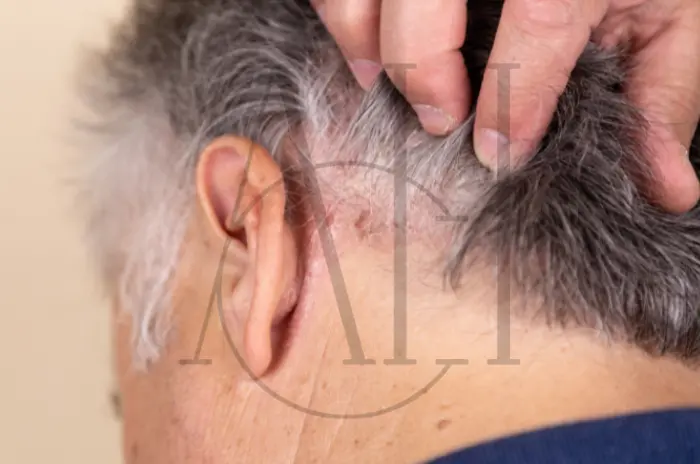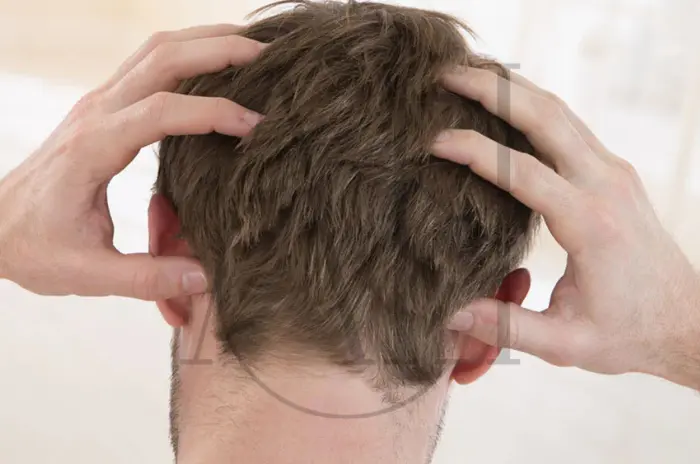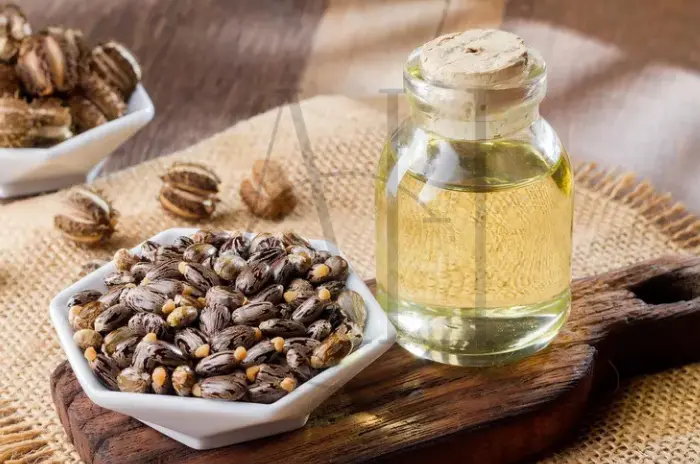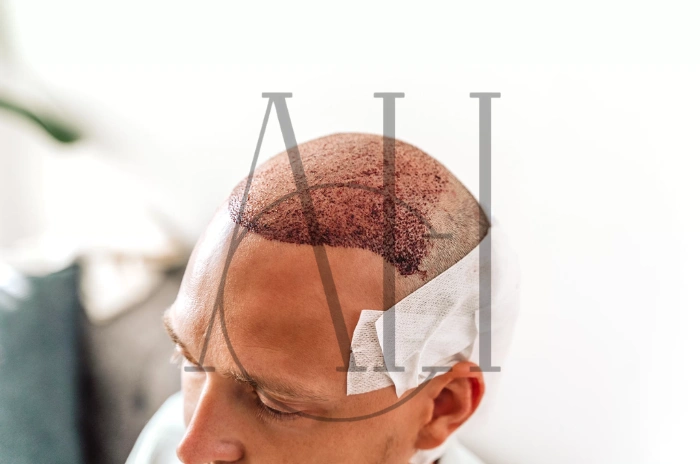A dry scalp is a common condition that can cause significant discomfort and embarrassment. Characterized by tightness, itching, and flaking, this scalp issue affects people of all ages. While it may seem like a minor inconvenience, an untreated dry scalp can lead to persistent irritation and impact your overall hair health.
Understanding the underlying causes and recognizing early signs of dry scalp are crucial steps toward effective treatment. This comprehensive guide will help you identify, treat, and prevent dry scalp using both home remedies and medical interventions when necessary.
Table of Contents
ToggleWhat dry scalp is and key symptoms
Dry scalp occurs when the skin on your head lacks adequate moisture and natural oils. This deficiency disrupts the skin’s protective barrier, leading to irritation and visible flaking. Unlike other scalp conditions, dry scalp specifically results from insufficient hydration rather than excess oil or fungal overgrowth.
The primary symptom is an itchy scalp and flaking that produces small, white, powdery flakes. These flakes are noticeably different from dandruff flakes in both size and texture. You may also experience a tight, uncomfortable sensation across your scalp, particularly after washing your hair or spending time in dry environments.
Additional symptoms include increased scalp sensitivity, redness in affected areas, and hair that appears dull. Some people notice that their itchy scalp worsens at night or during seasonal changes. The skin may feel rough to the touch, and in severe cases, small cracks can develop.
If symptoms persist for more than two weeks, or if scratching leads to bleeding, it’s important to seek professional evaluation.
Dry scalp vs dandruff key differences
Understanding dry scalp vs dandruff is essential for choosing the right treatment approach. While both conditions cause flaking and itching, they have distinct characteristics and require different care strategies.
Dry scalp produces small, dry, white flakes that easily fall from your hair. The skin feels tight and dehydrated, similar to dry skin elsewhere on your body. The itching is typically mild to moderate and often accompanied by tightness.
Seborrheic dermatitis dandruff, conversely, results from excess oil production and yeast overgrowth. The flakes are larger, yellowish, and have an oily texture. Dandruff often causes more intense inflammation with visible redness. The itching tends to be more severe.
| Feature | Dry Scalp | Dandruff |
|---|---|---|
| Flake Size | Small, fine | Large, chunky |
| Flake Texture | Dry, powdery | Oily, sticky |
| Scalp Feel | Tight, dehydrated | Greasy, inflamed |
| Primary Cause | Lack of moisture | Excess oil, yeast |
Another key difference lies in treatment effectiveness. Anti-dandruff shampoos work well for seborrheic dermatitis dandruff but can worsen dry scalp by stripping moisture. Conversely, heavy moisturizing treatments ideal for dry scalp might worsen dandruff by adding excess oil.
Medical treatments for scalp psoriasis tinea capitis and AK
When dry scalp symptoms persist despite home care, underlying medical conditions may be responsible. Scalp psoriasis is a chronic autoimmune condition that causes thick, silvery-white scales and inflamed patches. This condition requires specialized medical treatment.
Phototherapy for scalp psoriasis uses ultraviolet light to slow excessive skin cell production and reduce inflammation. Treatment sessions typically occur 2-3 times weekly in a dermatologist’s office. Combined with topical corticosteroids, phototherapy can significantly improve symptoms within 4-8 weeks.
Tinea capitis scalp ringworm is a fungal infection that causes scaling, hair breakage, and sometimes painful inflammation. Antifungal treatment for scalp ringworm requires oral medications like griseofulvin for 6-8 weeks. Topical treatments alone are insufficient because the fungus infects hair follicles deeply.
Actinic keratosis scalp develops from cumulative sun exposure and appears as rough, scaly patches. These precancerous lesions require dermatological evaluation and treatment with cryotherapy or topical chemotherapy creams.
Medicated Shampoo Options
Selenium sulfide shampoo effectively treats both dandruff and mild scalp psoriasis. It reduces yeast levels and slows skin cell turnover. Apply 2-3 times weekly, massaging into the scalp and leaving for 5-10 minutes before rinsing.
Salicylic acid shampoo acts as a keratolytic agent, gently exfoliating dead skin cells and reducing scale buildup. It’s particularly beneficial for flaky scalp conditions. Start with once-weekly applications and gradually increase frequency.
Knowing when to see a dermatologist for dry scalp can save time and prevent complications. Seek professional help if you experience severe itching disrupting daily life, rapid hair loss, scalp pain, or symptoms unresponsive to 4 weeks of home treatment.
Common Causes of Dry Scalp and Risk Factors
Identifying dry scalp causes helps target treatment effectively. Environmental factors rank among the most common triggers. Cold weather with low humidity strips moisture from your scalp, while indoor heating systems create an even drier environment. This combination particularly affects people during winter months.
Product-related causes include harsh shampoos containing sulfates, alcohols, and synthetic fragrances. These ingredients strip your scalp’s natural protective oils. Contact dermatitis scalp reactions occur when you’re sensitive to specific hair product ingredients, causing inflammation and dryness.
Age significantly impacts scalp moisture levels. As we mature, sebum production naturally decreases, beginning as early as the mid-30s. This reduction makes older adults more susceptible to dry scalp.
Additional risk factors include frequent hair washing that removes protective oils, using hot water during shampooing, excessive heat styling, swimming in chlorinated pools, and nutritional deficiencies in essential fatty acids and zinc.
Lifestyle and Dietary Factors
Dehydration significantly contributes to dry scalp development. Insufficient water intake affects skin moisture throughout your body. Aim for at least 8 glasses of water daily.
Dietary choices impact scalp health substantially. Diets lacking omega-3 fatty acids, found in fish and walnuts, compromise skin barrier function. Vitamin deficiencies, particularly vitamins A and E, also contribute to scalp dryness.
Stress and poor sleep patterns can trigger or worsen dry scalp symptoms. Chronic stress affects hormone levels that regulate oil production. Managing stress through relaxation techniques benefits overall scalp health.

How to Treat Dry Scalp with Simple Lifestyle Changes
Implementing home remedies for dry scalp can provide significant relief. Natural oil treatments are highly effective for restoring moisture. Coconut oil penetrates the scalp effectively thanks to its unique molecular structure. Warm 2-3 tablespoons, massage into your scalp, and leave for 30-60 minutes before washing with a gentle moisturizing shampoo.
Aloe vera gel offers immediate soothing relief for itchy scalp while delivering hydration. Use pure aloe vera gel directly from the plant or purchase organic products. Apply to your scalp, let sit for 20-30 minutes, then rinse with cool water.
Apple cider vinegar rinses restore your scalp’s natural pH balance and remove product buildup. Mix equal parts water and raw apple cider vinegar, apply after shampooing, massage for 2-3 minutes, and rinse well. Use this treatment once weekly.
Tea tree oil possesses natural antimicrobial properties that support scalp health. Add 5-10 drops to your regular shampoo or dilute in a carrier oil for direct scalp massage.
Adjusting Your Hair Washing Routine
Frequency matters significantly in dry scalp treatment. Overwashing strips natural oils faster than your scalp can replenish them. Reduce washing to 2-3 times weekly unless you have very oily hair.
Water temperature dramatically affects scalp moisture. Hot water opens pores excessively and strips more oil than necessary. Always use lukewarm or cool water for shampooing and rinsing.
Selecting the best shampoo for dry scalp requires careful ingredient evaluation. Avoid sodium lauryl sulfate and sodium laureth sulfate. Look for sulfate-free formulas with moisturizing ingredients like glycerin, hyaluronic acid, and natural oils. Fragrance-free options reduce the risk of contact dermatitis scalp reactions.
How to prevent a dry scalp hydrate protect and choose gentle products
Prevention is always easier than treatment when it comes to dry scalp. Establishing a comprehensive scalp care routine focused on hydration, protection, and gentle maintenance helps maintain optimal moisture levels year-round.
Internal hydration forms the foundation of scalp health. Drink adequate water throughout the day, adjusting intake based on activity level and climate. Herbal teas and water-rich foods contribute to overall hydration. Limit caffeine and alcohol consumption, as both have dehydrating effects.
Environmental protection prevents moisture loss. During cold months, wear hats made from natural, breathable fibers like cotton or silk. Synthetic materials can irritate sensitive scalps. In summer, protect your scalp from UV damage with hats or UV-protectant hair products.
Use a humidifier in your home, especially in bedrooms. Aim for 40-50% humidity levels to prevent excessive moisture loss. This is particularly important during winter when indoor heating creates very dry air.
Product Selection and Application Techniques
Choose hair care products formulated for sensitive or dry scalps. A gentle moisturizing shampoo should cleanse effectively without stripping essential oils. Look for formulas with added moisturizers, botanical extracts like chamomile, and pH-balanced ingredients.
Conditioning techniques matter as much as product choice. Apply conditioner primarily to hair lengths and ends rather than directly on the scalp if your hair tends toward oiliness. For very dry scalps, lightweight conditioners applied to the scalp can provide additional moisture.
Minimize heat styling frequency and intensity. When using blow dryers, maintain at least 6 inches distance from your scalp and use the cool setting. Apply heat protectant products before using thermal styling tools. Air drying remains the gentlest option for both hair and scalp health.
Avoid tight hairstyles that pull on your scalp, as tension can irritate skin. Loose braids, gentle ponytails, and natural styles reduce stress on both hair follicles and scalp skin. Change your part line regularly to prevent concentrated sun exposure in one area.
Regular scalp massage stimulates blood circulation and distributes natural oils. Spend 5 minutes daily gently massaging your scalp with fingertips. This simple practice enhances nutrient delivery and promotes healthy oil production.
How to Fix Dry Scalp Signs Causes and Best Treatments – Frequently Asked Questions
How do you distinguish dry scalp from dandruff?
Dry scalp produces small, white, dry flakes with tight skin, while dandruff causes larger, oily, yellowish flakes with greasy, inflamed scalp.
What are the most common causes of dry scalp?
Cold weather, harsh shampoos with sulfates, hot water washing, excessive heat styling, aging, and dehydration are the primary causes.
Can simple lifestyle changes treat a dry scalp?
Yes, adjusting washing frequency, using lukewarm water, applying natural oils, staying hydrated, and choosing gentle products effectively treat most dry scalp cases.
When should you seek medical treatment for dry scalp?
Seek professional help if symptoms persist beyond 4 weeks, you experience hair loss, severe pain, bleeding, or signs of infection appear.




